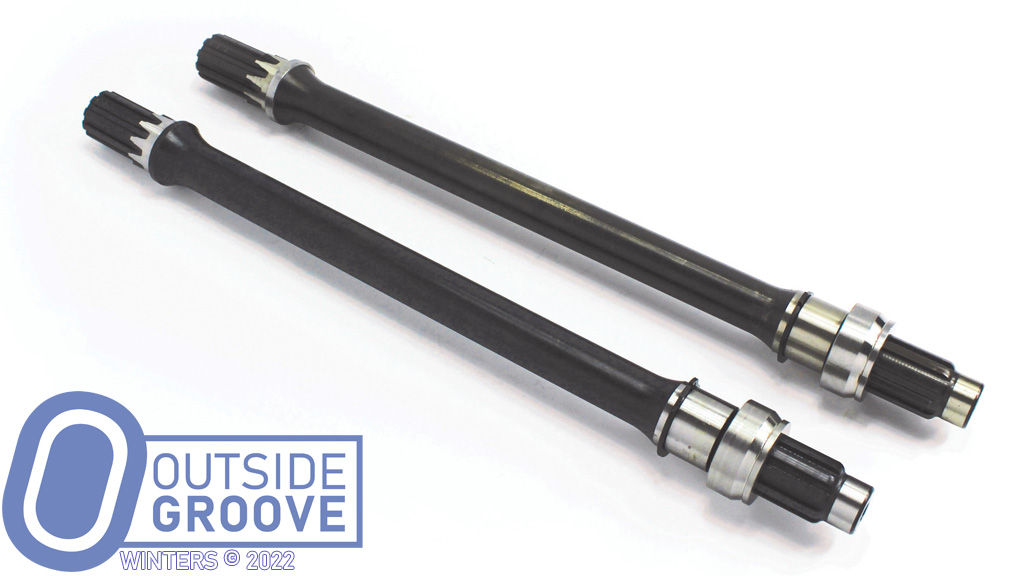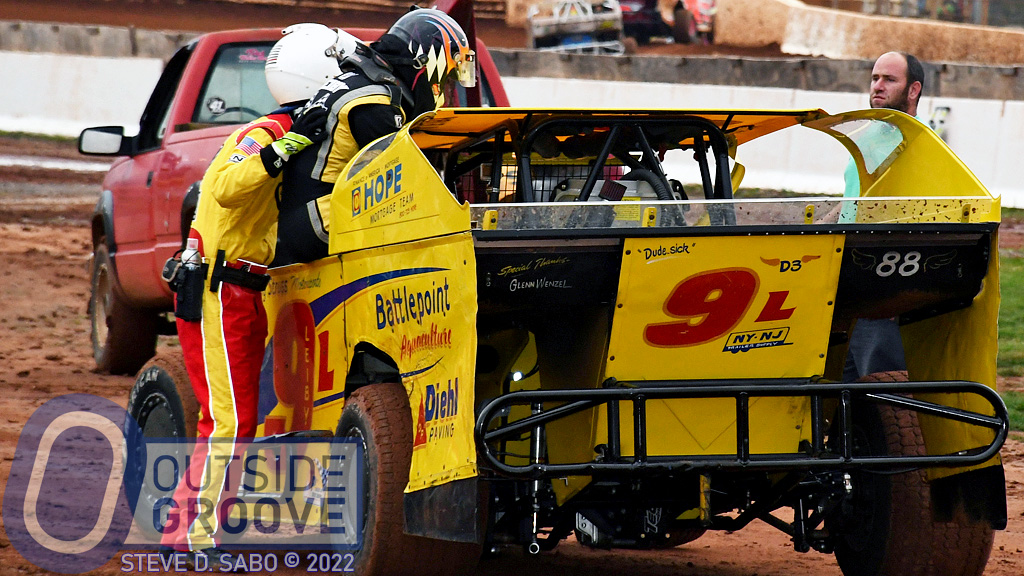Jimmy Leiby wondered if a broken lower shaft in his quick-change rear end caused a U-joint failure on the transmission-end of the driveshaft. He barely avoided serious injury when the driveshaft in his 358 modified broke free, causing the transmission cover to hit his leg while racing. The incident occurred during his heat race at BAPS Motor Speedway in York Haven, Pennsylvania.
“I was just coming out of the corner, where the forces put my leg against the cover,” said Leiby, of West Milford, New Jersey. “When I was getting back on the throttle, I felt something hit my leg. I was at 6,000 rpm. Luckily, it didn’t happen at the end of the straightaway, where I would be at 8,000 rpm. I was lucky to walk away with a big lump on my leg, and not any broken bones.”
Leiby found the U-joint on the transmission end of the driveshaft had failed. He then dug deeper. Leiby took apart his Winters quick change rear end. He found the lower shaft within the rear end had broken.
“I started wondering if the broken lower shaft in the rear end caused the U-joint to break,” Leiby said.
He recalled that earlier in the season he had hit the wall hard with his right-rear, which he speculated may have weakened the quick change lower shaft. Leiby added that he had inspected the lower shaft and did not see any cracks. Then again, he added it’s difficult to find any signs of damage as the lower shaft is bathed in oil.
Curt Iseli, of Winters, offered some perspective.
“While hitting the wall certainly could have damaged Leiby’s lower shaft, we don’t believe it’s possible for the lower shaft to cause a failure ‘upstream’ in the driveline — to the driveshaft, yoke, or transmission.
“When the lower shaft breaks, the connection between the transmission/driveshaft and the rear end is lost. This allows the driveshaft to spin freely, which would not put any stress on the yokes or transmission components. Quite the opposite, it could allow the engine to over-rev briefly until the driver gets out of the gas. On the other hand, a transmission failure in which the transmission locks up would surely put stress on and potentially break parts downstream — like the yoke, driveshaft and the rear end, since they’re going from rotating at 6,000-plus rpm, in Leiby’s case, to a dead stop.”
Nevertheless, Winters urges its customers to check their rear end’s lower shaft often, especially on Northeastern-style modifieds.
“These cars have such a critical driveshaft angle, with forces that are incredibly hard on the driveline, front to back,” said Bob Salathe, of Winters. “If the right rear makes contact with the wall, there could have been a crack in the lower shaft [and] the shaft should be inspected, as it should be during a normal maintenance schedule.”
Salathe mentioned that you could Magnaflux a shaft to detect hard-to-see cracks. This costs about $100. Or, you could purchase a new one for $165. Another alternative is to go with a VascoMax lower shaft that Salathe said is “exactly the same [as the standard one], but it is made from a much stronger material.“
That version retails for $1,234.33 from Winters.

Source
Winters
York, Pennsylvania
717-764-9844
wintersperformance.com
Outside Groove Note of Transparency: This story was modified to reflect an update from Winters on what may have caused the U-joint failure (2022-11-17).
Mike Adaskaveg has written hundreds of stories since the website’s inception. This year marks his 54th year of covering auto racing. Adaskaveg got his start working for track photographer Lloyd Burnham at Connecticut’s Stafford Motor Speedway in 1970. Since then, he’s been a columnist, writer, and photographer, in racing and in mainstream media, for several outlets, including the Journal Inquirer, Boston Herald, Stock Car Racing, and Speedway Illustrated. Among Adaskaveg’s many awards are the 1992 Eastern Motorsport Press Association (EMPA) Ace Lane Photographer of the Year and the 2019 National Motorsports Press Association (NMPA) George Cunningham Writer of the Year.





